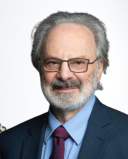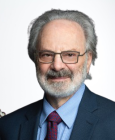Persuasion
Consciousness and the Quantum Mind
Are our brains connected to the basic structure of the universe?
Posted July 18, 2022 Reviewed by Davia Sills
Key points
- Today mathematicians and physicists generally accept the fact that the world is fundamentally governed by quantum rules.
- Our bodies and minds are governed by a confluence of classic and quantum laws of physics.
- Orch OR may provide a bridge between neuroscience and more spiritual approaches to consciousness.
- Quantum biology explains how the mind affects matter, which we know it does—think placebo effect, psychosomatic medicine, etc.
Physical phenomena, at least at the macroscopic level, have a location in space and can be quantified. On the other hand, mental phenomena cannot be localized and cannot be quantified. The new generation of post-materialism scientists and those familiar with quantum physics have taken a run at this puzzling conundrum.
Post-materialism science
Stuart Hameroff, from the Departments of Anaesthesiology and Psychology, University of Arizona, Tucson, emerged from obscurity in 1994 to advance what seemed—at the time—one of the more bizarre ideas about the human brain. Supported by Sir Roger Penrose, Hameroff suggested that quantum vibrational computations in microtubules, which are major components of the cell structural skeleton, were “orchestrated” (“Orch”) by synaptic inputs and memories stored in microtubules and baptized by Penrose’s “objective reduction” (“OR”), hence “Orch OR.” They suggested that EEG rhythms (brain waves) derive from deeper-level microtubule vibrations. Most significantly, they further proposed that microtubules govern our consciousness.
Quantum physics and the rise of quantum biology
To understand these new ideas about consciousness, I think it is necessary to gain at least a rudimentary understanding of Quantum Physics, also called Quantum Mechanics (QM). Therefore, I offer here a simplified insight into Quantum Mechanics, with the caveat that I am not a physicist.
Quantum Physics deals with the study of particles at the atomic and subatomic levels. Max Born coined the term in 1924. Quantum Physics is complex, paradoxical, and hard to fathom if one is tethered too closely to classical Newtonian physics. The theory sets fundamental limitations on how accurately we can measure particle locations and velocity, replacing classical certainty with probabilistic uncertainty. The theory describes just about every phenomenon in nature, both organic and inorganic, ranging from the color of the sky to the molecules and ions in living organisms. What makes quantum mechanics confusing is that the laws governing it differ drastically from classical physics.
So, dear reader, jettison your attachments to high school physics and take a walk on the wild side. A bit of historical background. During the 1920s and early 1930s, physicists discovered what has been called the wave-particle duality, a fundamental concept of quantum mechanics which proposes that elementary particles, such as photons and electrons, possess the properties of both particles and waves. What’s even stranger is that the particle and wave aspects cannot be separated; rather, they complement one another. Niels Bohr called it the principle of complementarity. He saw this complementarity as the inevitable result of the interaction between a phenomenon and the apparatus used to measure it.
The mind complements matter, just as the particle aspect of matter complements its wave aspect. Consciousness can interface with the material world because matter and energy are interchangeable.
As a result, a revolutionary new branch of physics arose called quantum physics or quantum mechanics (QM). QM has confirmed that atoms and subatomic particles are not really solid objects—they do not exist with certainty at definite spatial locations and definite times. Matter is not solid in the way that had been thought.
The idea of atoms goes back to Ancient Greece, where philosophers like Leucippus, Democritus, and Epicurus proposed that nature was composed of what they called ἄτομος (átomos) or “indivisible individuals.” They thought that if you take an object, for example, a watermelon, and keep cutting it in half and then again in half into infinity, you will eventually end up with a particle that is so small that it is “uncuttable.” Nature was, for them, the totality of discrete atoms in motion. Which, if you think about it, is downright brilliant considering they lacked any of the bells and whistles of modern science. Today, we know that the atom is almost entirely empty but for a swirling cloud of moving subatomic particles, such as photons, electrons, neutrinos, quarks, etc.
Remarkably, researchers discovered that the particles such as electrons that are being observed and the observer—the physicist, the apparatus, and the method used for observation—are linked. The scientists hypothesized that the consciousness of the observer affects the physical events being observed and that mental phenomena influence the material world. Recent studies support this interpretation and suggest that the physical world is no longer the primary or sole component of reality, nor that it can be fully understood without making reference to the mind.
Let’s take a closer look. Early pioneers of quantum physics saw applications of quantum mechanics in the biological sciences. In 1944, Erwin Schrodinger discussed applications of quantum mechanics to biology. Schrödinger suggested that mutations are the result of “quantum leaps.” In 1963, Per-Olov Lowdin at Uppsala University, Sweden, proposed proton tunneling as another mechanism for DNA mutation. In his paper, he stated that there is now a new field of study called “quantum biology.”
Subatomic particles, atoms, or even entire molecules, can exhibit interference, a
classical property of waves in which two peaks reinforce each other when they overlap. Quantum effects such as interference rely on the wave functions of different entities being coordinated (they are said to be coherent) with one another. That sort of coherence is what permits the quantum property of superposition, in which particles are said to be in two or more states at once. If the wave functions of those states are coherent, then both states remain possible outcomes of a measurement.
Being in two states at once is not an unknown phenomenon in human psychology. Who has not had the experience of debating in their minds two contrary options, such as, “Shall I write this letter of complaint or not?” One part of you says, “Give them hell!” and advocates in favor of writing the letter; the other cautions you, “Think of the consequences.” This discussion can last a few seconds, minutes, or hours. Finally, you decide on a course of action. We often say, “I was of two minds,” to describe this kind of a situation.
Final thoughts
We know that the mind can influence the state of the physical world. We know that the intentions, emotions, and desires of an experimenter may influence experimental outcomes, even in controlled and blinded experimental designs. We have explored subjects like general anesthesia, hypnosis, placebos, near-death experiences (NDEs), and out-of-body experiences (OBEs), which separately and jointly establish that the brain acts as a transceiver of mental activity. Other organs, tissues, and cells in the body, as well as energetic signals from the universe, contribute to what we call the mind.
When we sleep, we are not fully conscious, but we are also not fully unconscious, as, for example, lucid dreams prove. If a person is under general anesthesia, should one of the doctors say something alarming like, “Oh, I think we just ruptured her stomach,” the patient will react with all the physical signs of a panic attack. The brain may be underperforming, but the mind is fully operational.
References
Pribram, Karl (2012). Quantum Implications: Essays in Honour of David Bohm. The implicate brain (Book Chapter)
The Cambridge Declaration on Consciousness:
http://worldanimal.net/images/stories/documents/Cambridge-Declaration-o…
Bonhomme V, Staquet C, Vanhaudenhuyse A, and Gosseries O et al., (2019) General Anesthesia: A Probe to Explore Consciousness. Front. Syst. Neurosci. 13:36.
Penrose, R. (1994). Shadows of the Mind: A Search for the Missing Science of Consciousness, Oxford: Oxford University Press.
Hameroff, Stuart (2014). Consciousness, Microtubules, & ‘Orch OR’: A ‘Space-time Odyssey.’ Journal of Consciousness Studies, Vol 21, no 3-4, pp 126-158
Hudetz, A in Volk, Steve (2018). Down The Quantum Rabbit Hole. Discover Magazine




